High Plains Dragster: Wyoming's Street Racing Capital


Joey Anton rolls his 1992 Mustang notchback into the burnout box. A pair of goggle-eyed starting lights floats unblinking above the car’s massive cowl induction hood. With a blast of V-8 engine sound, Anton lights up the Mustang’s slicks in a puddle of water. Spectators cheer. It’s just a matter of time.
This story originally appeared in Volume 19 of Road & Track.
Car trailers line Westwinds Road; it’s a straight shot to the starting line, where Trent Diaz’s Nova cuts a sinister figure. A fierce tangle of forced-induction plumbing juts from its engine compartment, and the low-slung, coal-black racing car skulks into the lane next to Anton’s. Diaz preps the Nova’s slicks with more hellacious sound, smoke, and cheers from the crowd. Then, he pulls up beside the Mustang on a bumper line laid down by a slash of orange spray paint.

This is the Bar Nunn Cash Days, a street-racing event held on a public roadway in Bar Nunn, a tiny suburb of Casper, Wyoming. It’s a legal version of No Prep, a raw form of drag racing force-multiplied by the hit cable television show Street Outlaws. Referring to the unprepared track surface on which most street racing occurs, No Prep was born from surreptitious meetups on remote highways. It’s since grown into a nationwide drag-racing movement. This event is but one example.
Nowadays, a number of No Prep events are staged legally, held on airfields and drag strips around the U.S., providing a national circuit of sorts in which the best No Prep racers can compete without losing their cars to Johnny Law. The central principle of No Prep racing is that participants must adapt to any surface, varying—just as public streets do—from flat and grippy to cracked and gritty. Bar Nunn Cash Days is one of the few No Prep racing events that is both legal and held on public streets.
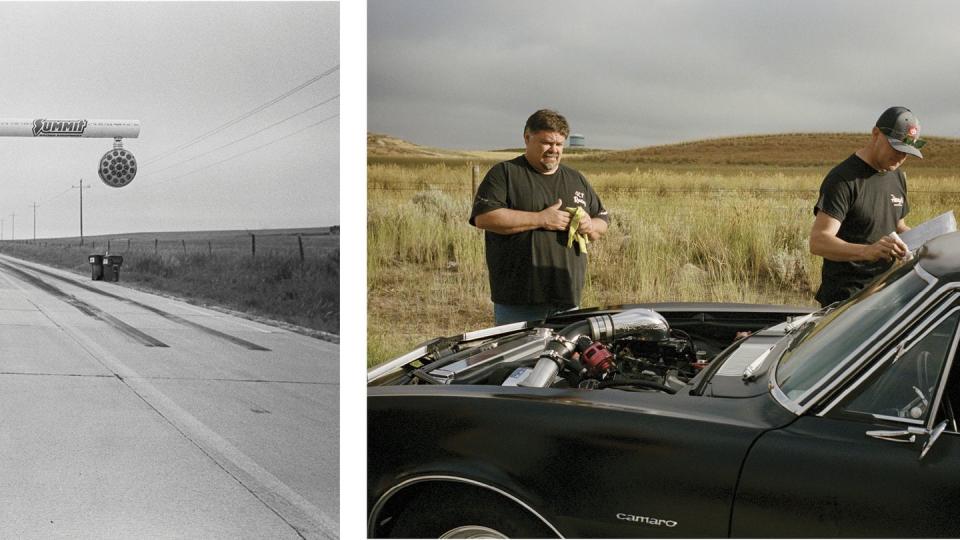
Westwinds Road, the Bar Nunn racing grounds, is a 10-minute drive from a good steakhouse and a chain hotel. It’s not exactly the middle of nowhere but not quite the middle of somewhere either—just two lanes of concrete pavement running pin straight through the grasslands. Carbon-black burnout marks streak the road at one end; at the other, there’s a cul-de-sac. Overhead, it’s just an American West dome of cobalt sky. At the starting line, Anton and Diaz sit in their highly prepped street-legal racing cars while, one-eighth of a mile down the road, local photographer Kyle Cleary trains his Nikon on the finish line. With cash at stake, photographic evidence is crucial, so Cleary sets the camera to shoot eight frames per second as the cars roar by.
Race organizer Balor Zigmont watches nearby and explains the rules. Simply put, it’s a tournament-style shootout for street-legal cars, with a cash pot awarded at the end. There’s a $100 buy-in for small-tire cars like Anton’s and Diaz’s, meaning their racing slicks can only be up to 28.5 inches tall and 10.5 inches wide, a standard size for No Prep racing. It’s $50 for cars on street tires. There’s a guaranteed $2000 payout. Setting a maximum size for racing slicks limits the cars’ traction, a kind of equalizer in this run-what-you-brung-style race that spotlights skill over unbridled horsepower.
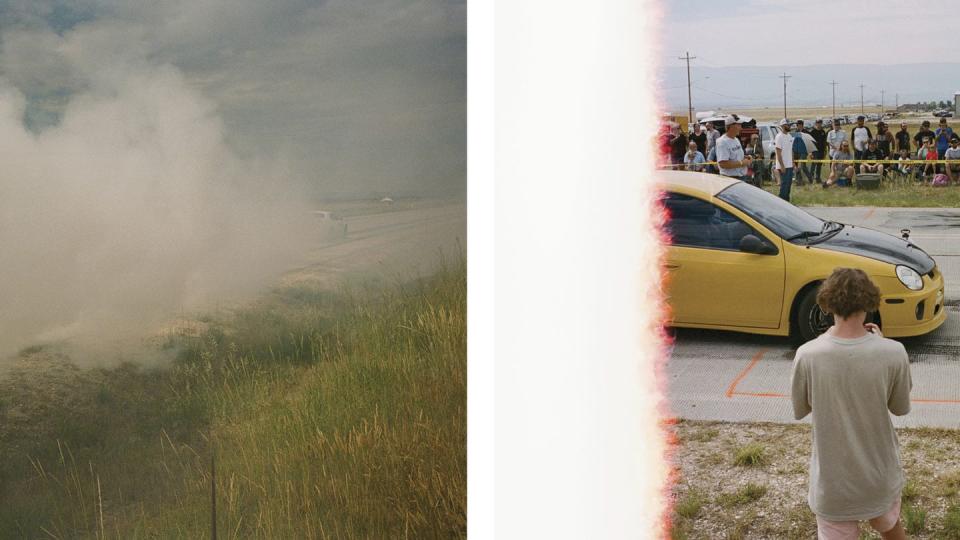
According to No Prep canon, the Cash Days format was introduced by Texas street racer Chris “Limpy” Collins, a bearded mountain of a man for whom racers hold deep reverence as the movement’s godfather. The tournament, as in just about any sport in the world, involves a series of contests between competitors vying for an overall prize. In this case, it’s not badminton matches; it’s drag races. Anyone who’s competed in a Cash Days event, or watched one of the numerous videos on YouTube with Cash Days in the title, knows the drill: mainly performed after dark, illuminated by headlamps, and with spotters watching for the five-0.
“It’s chip-draw style,” Zigmont says. “If we’ve got 20 racers, we’ll have 40 chips, half of them red, half of them blue.” These are poker chips, and according to lore, the standard procedure going back to Limpy’s original rules is that they’re drawn out of a Crown Royal whisky pouch.
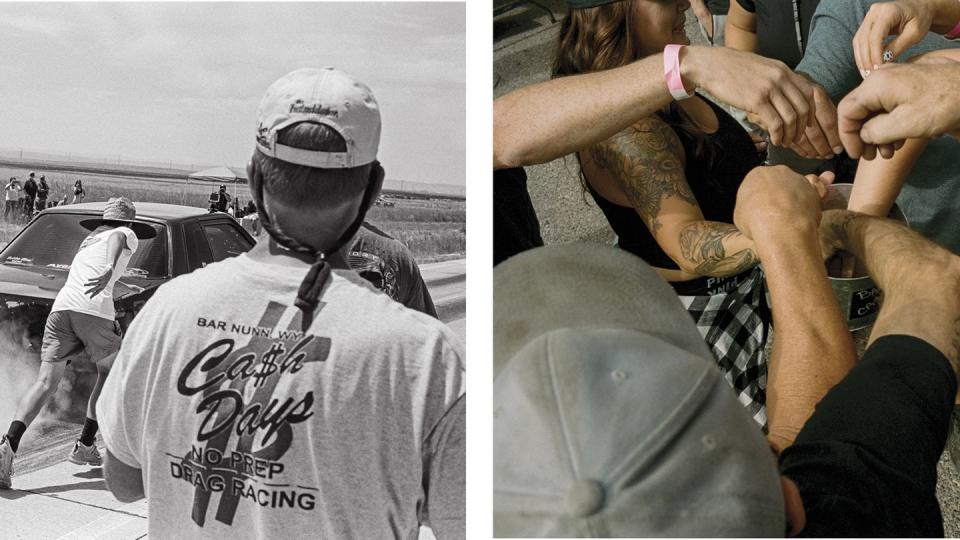
“Everybody draws a chip,” he says. “Whoever’s numbers match race each other, red chip in the right lane, blue chip in the left lane. Horsepower doesn’t matter. You can have whatever car you want.” Then the cars race, untimed; the winner moves on, and the loser is out.
Organized mainly through private chats and social-media posts, No Prep racing has attracted a younger generation of fans and racers with its desperado vibes, camaraderie, and purity of winner-take-all competition. Like the illegal events, legal No Prep racing happens on any available unprepared surface—frequently on the backside of a drag strip, from the shutdown area toward the starting line, for example. Such races are primarily “heads up,” meaning both cars leave the starting line simultaneously, defying the sophisticated handicapping schemes used in bracket racing to even up competition in events sanctioned by the National Hot Rod Association (NHRA).
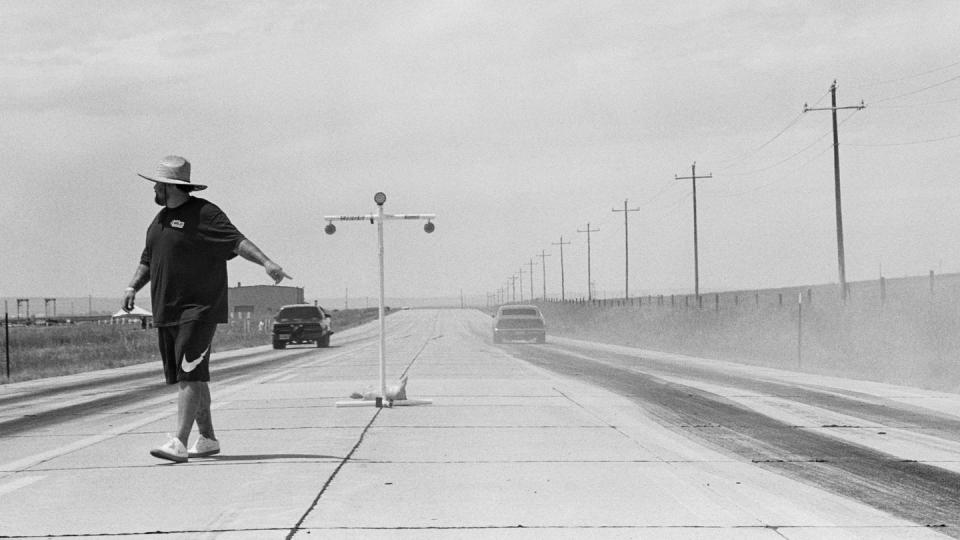
At the Bar Nunn starting line, things are happening quickly. Ryen DeClue, his straw hat bearing up against the brutal prairie rays, gives each driver the five-second signal—a come-here motion like a hype man bidding them to applaud louder. The engines jump to launch revs, filling the big sky with deep V-8 rage and turbine whistle. DeClue thumbs a button on the starting fob and ducks. The bulbs light, and the cars charge out of the gate. The nose of the Mustang leaps as the slicks hook up, and the cars tear away, blasting down Westwinds Road toward an infinite horizon.
If you’re an angler, you know Casper for blue-ribbon trout—there are around 4000 catchable browns per mile, according to the Wyoming Office of Tourism, feeding in the riffles of the North Platte River. To a visitor from out East, Casper also appears to punch above its weight in drag racing. According to research by Insurify, an insurance comparison-shopping site, there is often a negative correlation between a state’s street-racing rate and its population density. Wyoming, the second-least densely populated state in the U.S. after Alaska, with around six people per square mile, has 42.4 drivers per 100,000 with a street-racing violation, coming in second (after North Dakota) on the company’s list. Idaho, meanwhile, with 8.3 such drivers per 100,000, is 10th.

At a glance, it’s not hard to see reasons why Wyoming might over-index in street racing. As a small city, Casper has a tight-knit car community. There’s engineering and mechanical talent drawn from the oil and gas industry, plus long, cold winters devoted to wrenching. And you can’t beat the location—travel a few minutes out of town, and you’ve got endless stretches of straight road with few other motorists. Racers looking to throw down need only drive to a quiet stretch of highway, set a few spotters, and maybe take a low-speed pass for pronghorns. Then, the race is on. Even if you’d rather not think about wrecks, the nearest hospital is minutes away.
On any given night, not far from Bar Nunn, Casper’s illegal Cash Days scene plays out somewhat contradictorily under cover of darkness on Amoco Road. Anecdotally, such races are so prevalent that it’s almost as if no one seems to mind.
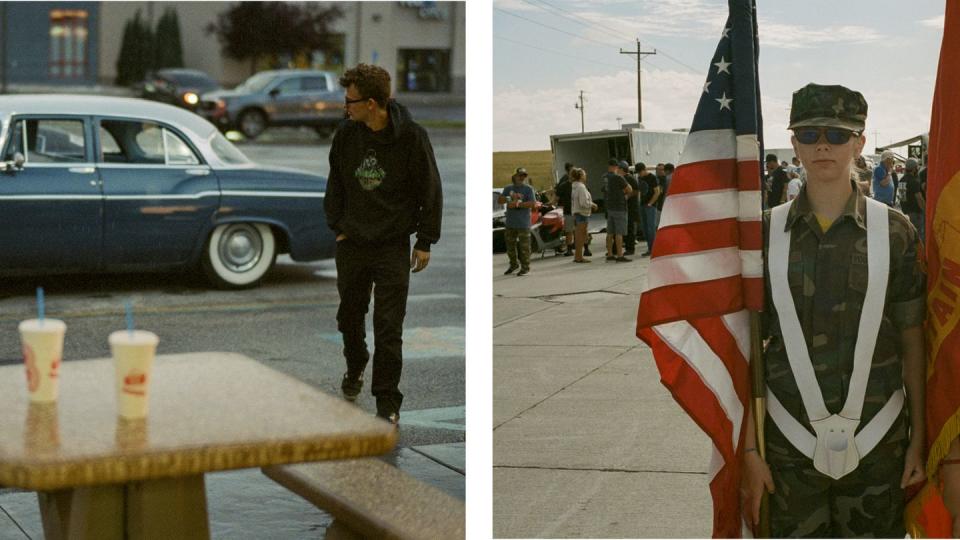
“The police know about it,” Zigmont says. “Sometimes it gets out of hand a little bit. They’ll just do a drive-by and flip their lights on, and then everybody’s got to kind of spool up and move to another location to finish the races.” Sometimes a racer will get a ticket, other times just a warning, unless there’s another legal issue. A number of local participants recounted stories of unfortunate racers busted for something other than street racing—expired registration, taillight out, outstanding warrant.
In July 2020, a Street Outlaws crew filmed three episodes of its Fastest in America spinoff in Casper, making minor celebrities (or major ones, depending on one’s perspective) of local talent, including Anton. It’s a feather in the cap of the local scene and may have even greased the wheels for the Bar Nunn event.
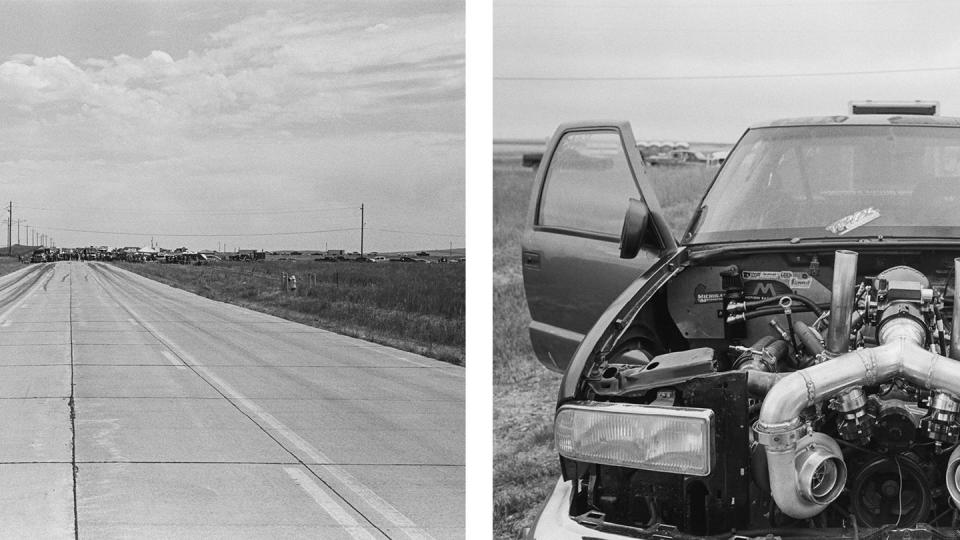
“After Street Outlaws came here and filmed,” Zigmont says, “the local municipalities really took notice of how many people were interested in it. So I just put one and one together, went over to Bar Nunn, and said, ‘Hey, would you mind if we tried to do this here?’ And they were very interested in going forward with it.”
Anton has raced on a bunch of Street Outlaws episodes, including franchise spinoffs Fastest in America, Mega Cash Days, and Locals Only. His wife, Courtney, was a main racer in Street Outlaws: Gone Girls. The Antons may be in other episodes, but with the show’s TV universe seeming to grow orthogonally year after year, it’s hard to say. No doubt, Street Outlaws, which now promotes its own live, legal racing events called No Prep Kings, is in no small way the nexus of the No Prep racing movement. With several Wyoming racers in the show’s orbit, Casper’s scene has kicked into something that feels like the big time.
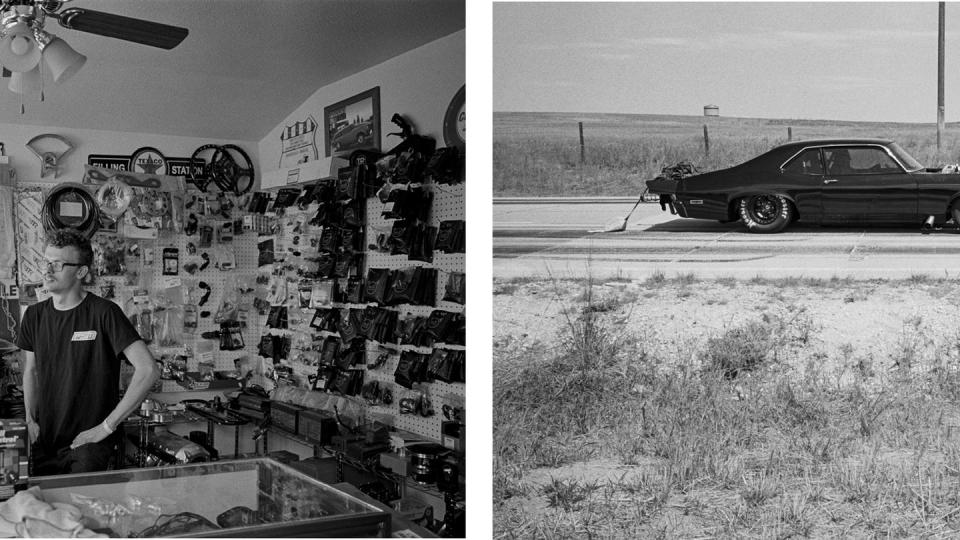
About 15 minutes west of town, in a workshop at the top of a long driveway off Poison Spider Road, Colton Smithey shows a few visitors around Prodigy Motorsports, a hot-rod and race shop that’s had its hands on too many of Casper’s local cars to count. A look around the shop reveals a two-tone 1955 Chevy 210 that produces around 4000 hp. It belongs to shop owner Shawn Fink, one of 10 Wyoming racers who competed on Street Outlaws: Best in America. His orange and black 1963 Chevy II station wagon from the show is up on a lift. Below is a drag-prepped C5 Corvette, a retirement gift from the car’s owner to himself. There’s also a Sixties-era front-engine slingshot dragster, a.k.a. a “digger,” in the corner. Its chromed V-8 is capped with an old-school Roots-type blower.
Rail thin, of average height, and topped with a shock of curly blond hair, Smithey looks like the nerdy kid from any skate park in the country. As a teenager, he took on the kinds of slam-it-to-the-ground heavy-truck builds that would intimidate a seasoned wrench. Despite his hoodie-and-Vans demeanor, Smithey, now 23, grew up on a ranch nearby and just finished explaining what it’s like to run 100 head of cattle.
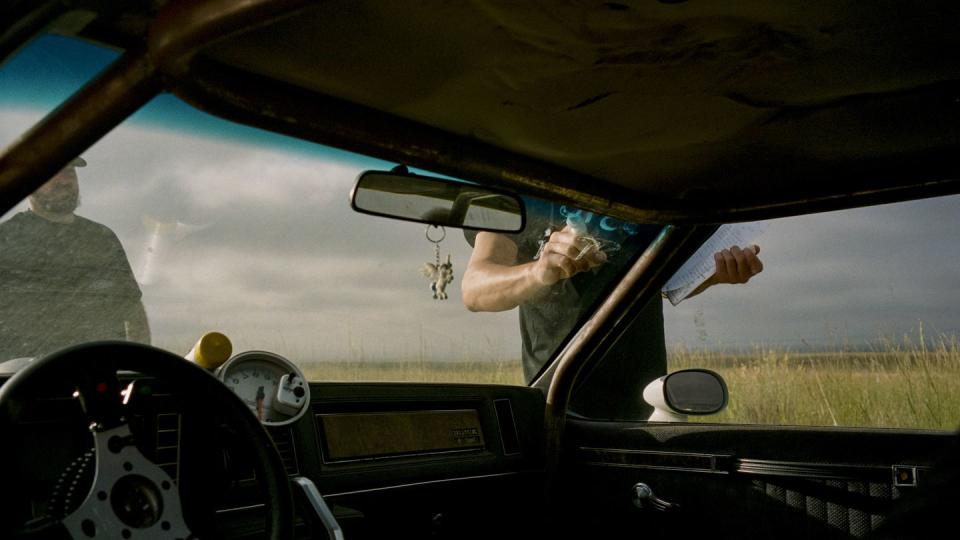
Now he’s talking about his approach to wiring and packaging, how he likes to make everything clean and symmetrical in an engine bay, and his love for Fifties cars. He and his friends would drive a ’55 DeSoto sedan after school to the Hamburger Stand, a local fast-food joint and the center of the town’s street-racing scene. Asked how many cars from the Bar Nunn Cash Days he and the shop have touched, he casually says, “At least a little bit of most of them.”
Back at Bar Nunn, Anton’s Mustang and Diaz’s Nova blast across the finish line. Cleary’s camera fires enough frames to stitch together a stop-action video, capturing the winner of the small-tire class. It’s Anton’s Mustang by a car length. While not as loud as a nitro-burning Funny Car at an NHRA strip, these cars make an impression when it comes to moving air.
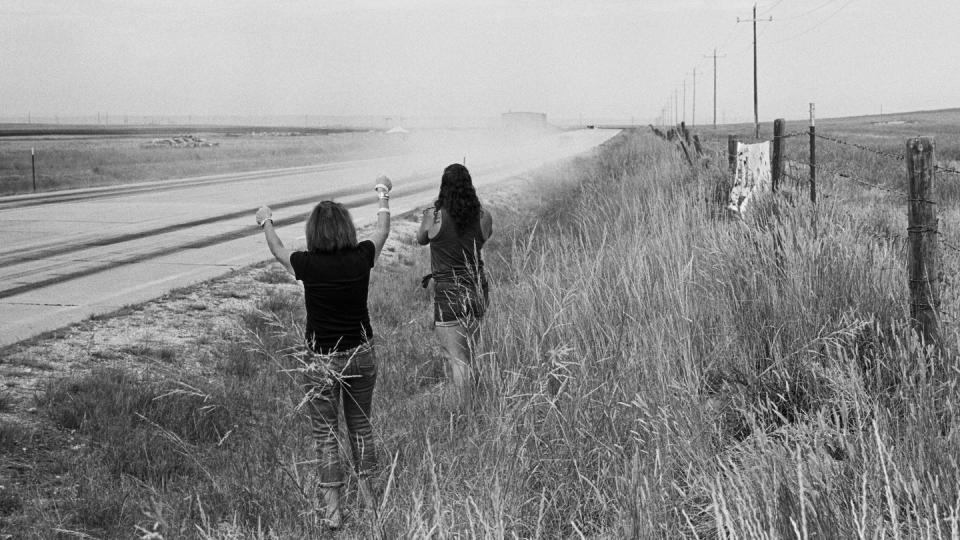
The noise issue “was one of the big hurdles that I had to clear with the town of Bar Nunn and the citizens,” Zigmont says. “The Street Outlaws were out there doing their test hits. Those were 2000- to 4000-hp cars. And they are exceptionally noisy. Everyone expected all that noise again. We’re running 600- to 1200-hp cars here, so you’re not going to hear that during the race. We got zero noise complaints.”
Still, according to Zigmont, the local governments seem to understand that their constituents have particular interests, and thus officials are willing to entertain them. “At the council meeting last night, I requested the town of Bar Nunn start helping out a bit, and they were onboard completely,” he says. “They’re going to close an additional road for me in September, and they’ll do additional road closures and are also looking into finding some bleachers for me to use.... My hopes are to get this thing up on its feet and then have the town of Bar Nunn say, ‘All right, we want to take the reins on this, and we want to build a track, and we want to get something permanent.’”
A couple of hours after Bar Nunn wraps, word comes down that an illicit Cash Days is happening that evening in Casper. Smithey fires up the DeSoto and, with his girlfriend Leland Mooren and sister Samantha onboard, leads a caravan to the Hamburger Stand to wait for racers to drive through. At dusk, a line of thunderstorms rolls off Casper Mountain. By the time the convoy saddles up and heads out to Amoco Road, lightning bolts fork across the darkening sky, and a cloudburst pummels the blacktop with endless sheets of prairie rain. They’ll be back tomorrow.

A car-lover’s community for ultimate access & unrivaled experiences.JOIN NOW Hearst Owned
You Might Also Like

 Yahoo Autos
Yahoo Autos 